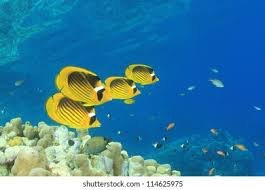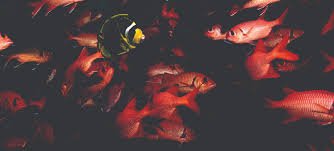
The dragon, a mythical and powerful creature, has been a central figure in cultures across the world for centuries. In Chinese culture, it is revered as a symbol of strength, wisdom, and protection. However, in contemporary art, the dragon has evolved beyond its traditional roles, becoming a complex and dynamic symbol that reflects various themes, from heritage to modernity, transformation, and innovation. In this article, we will explore the significance of the dragon in contemporary art, examining how modern artists incorporate this iconic figure into their work to express cultural narratives, challenge conventions, and offer fresh interpretations of traditional symbols.
1. The Evolution of the Dragon Symbol in Art
The image of the dragon has undergone significant transformations over the years. Traditionally, it was depicted in a mythological context, often associated with ancient royalty, divinity, and power. In ancient Chinese and East Asian cultures, dragons were considered auspicious creatures, believed to bring good fortune, prosperity, and protection to individuals and societies. The traditional dragon was often portrayed as a majestic, serpentine being with a long body, antler-like horns, and the ability to control elements such as water, wind, and fire.
In contemporary art, however, the dragon has transcended these traditional depictions. Artists today use the dragon in a variety of ways, reinterpreting its symbolism and adapting it to explore modern issues such as identity, transformation, and cultural heritage. The dragon has become a vehicle for artistic experimentation, allowing artists to blend ancient symbolism with contemporary aesthetics and techniques.
2. The Dragon as a Cultural Symbol in Contemporary Art
One of the most prominent ways in which dragons appear in contemporary art is through the lens of cultural symbolism. For many contemporary artists of Chinese descent, the dragon represents a strong connection to their cultural heritage and roots. By incorporating dragons into their works, these artists make bold statements about the ongoing relevance of traditional symbols in the modern world.
For instance, Chinese-American artist Ying Li uses the image of the dragon to explore migration, identity, and cultural continuity in a globalized world. Her works often feature dragon imagery as a symbol of transition and adaptation, reflecting the artist’s own experience of living between two cultures. By reinterpreting the dragon in the context of modern life, Li bridges the gap between her traditional Chinese upbringing and the influences of Western contemporary art.
Similarly, Ai Weiwei, one of China’s most famous contemporary artists, has utilized the dragon symbol in his works to critique social and political issues. Ai Weiwei is known for his bold installations and provocative sculptures, many of which incorporate elements of Chinese culture, including the dragon, in order to comment on topics like freedom of expression, government control, and cultural heritage preservation. His use of the dragon in pieces like “Dragon” (2008) reflects his critique of China’s rapid modernization and the tension between tradition and progress in contemporary society.
3. The Dragon as a Metaphor for Power and Strength
The dragon is often associated with power, and this aspect of its symbolism continues to resonate with contemporary artists, especially when exploring themes of strength and resilience. In the works of many artists, the dragon serves as a visual metaphor for the inner strength required to overcome obstacles or the power dynamics inherent in society.
Take, for example, the works of Huang Yong Ping, a Chinese artist known for his installations that explore cultural symbolism and the interaction between East and West. Huang’s piece, “Dragon in the Cave” (2009), draws on the traditional dragon figure to represent power, but also the ambivalence that comes with it. The dragon in his installation is not a serene, majestic figure, but a twisted, complex creature trapped in a precarious position. This reinterpretation of the dragon highlights the complexity of power and the delicate balance between dominance and vulnerability.
In another example, Zhang Huan, a Chinese performance and visual artist, has used dragon imagery in his sculptural works to explore themes of strength and transformation. Zhang’s iconic work, “Dragon” (2010), features a large, imposing sculpture of a dragon made from wooden beams, evoking the power and magnitude of the mythical creature. The use of organic materials and the dragon’s transcendent form allows Zhang to discuss human endurance, cultural legacy, and the natural world in the context of modern challenges.
4. Dragons as a Reflection of Globalization and Cultural Fusion
In today’s globalized world, the concept of the dragon as a global symbol has become more apparent. As art markets and cultural exchanges have expanded beyond borders, the dragon has become a symbol that transcends nationalism and resonates with a broad spectrum of audiences. In contemporary art, dragons are used to explore the tensions between local identity and globalization, often reflecting the blending of cultures and the hybridity of modern societies.
Artists like Zhou Chunya, whose works often explore the blending of traditional Chinese elements with contemporary Western styles, incorporate dragons as a means of fusing the old with the new. Zhou’s “Dragon” series, for example, merges the traditional image of the dragon with vibrant, abstract color schemes, creating a unique and modern interpretation of the mythological creature. The dragon, in this context, becomes a symbol of the collision and synthesis of different cultural and artistic traditions.
This fusion of cultural influences can also be seen in street art, where dragons are often incorporated into graffiti and murals as a form of cultural commentary. For instance, street artist Liu Bolin, known for his camouflage art, has created pieces that feature dragons blending seamlessly into urban environments, suggesting the convergence of ancient symbols and modern cityscapes. This blending of tradition with urban life emphasizes the ongoing relevance of ancient symbols in an increasingly globalized world.
5. Dragons in Digital Art and Animation
With the rise of digital art and animation, the dragon symbol has found a new and exciting platform in the world of virtual reality (VR), video games, and digital illustrations. The use of dragons in video games and animated films has become a popular way for artists to create immersive experiences that allow viewers to engage with the dragon as a dynamic and interactive figure.
In digital art, the dragon is often depicted in hyper-realistic ways, using advanced technologies like 3D modeling and motion capture to bring the creature to life. Artists such as Zhang Xiaogang have incorporated dragons in their digital illustrations to create futuristic worlds, where the dragon symbolizes the connection between past traditions and future possibilities. The use of bold colors, sharp lines, and fluid movements makes the dragon a striking figure in the digital medium, reflecting both the power and mysticism associated with the creature.
In the world of animation, dragons continue to play a central role, with films like “How to Train Your Dragon” (2010) and “The Dragon Prince” (2018) capturing the imagination of audiences worldwide. These films portray dragons as multifaceted creatures, often embodying themes of growth, courage, and understanding. The dragons in these stories are not just mythological figures but characters with their own personalities, challenges, and arcs, reflecting the complexity of the human experience.
6. The Dragon as a Tool for Artistic Innovation
In contemporary art, the dragon has also been used as a tool for artistic innovation. Many artists incorporate the dragon into their works as a way of experimenting with different mediums and pushing the boundaries of traditional art forms. The dynamic, fluid nature of the dragon makes it an ideal subject for artists looking to explore movement, texture, and form.
Sculptors and installations artists, such as Wang Wen-Chih, have used dragon figures to explore the relationship between space and material. Wang’s work, “Dragon in the Wind”, uses suspended elements to mimic the curvature and movement of a dragon’s body, creating an immersive, interactive experience for viewers. The flexibility and versatility of the dragon allow artists to create multi-dimensional works that challenge traditional perceptions of static art and explore new ways of presenting the dragon as a living, breathing entity.
Conclusion: The Dragon’s Continued Relevance in Contemporary Art
The dragon continues to be a powerful and flexible symbol in contemporary art, adapting to modern themes while maintaining its deep-rooted cultural significance. From cultural identity to globalization, strength to transformation, the dragon serves as a powerful metaphor that resonates with both artists and audiences. Its presence in modern artworks reflects the dynamic and innovative nature of contemporary art itself—blending tradition with modernity, heritage with progress.
As the world continues to evolve, the dragon’s role in art will undoubtedly continue to evolve alongside it, remaining a symbol of strength, mysticism, and creativity for generations to come. Whether in digital art, sculpture, animation, or traditional painting, the dragon remains an enduring force in the world of contemporary art, a symbol of both
the past and the future.





